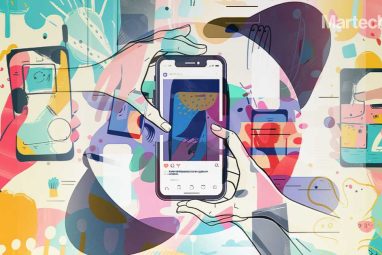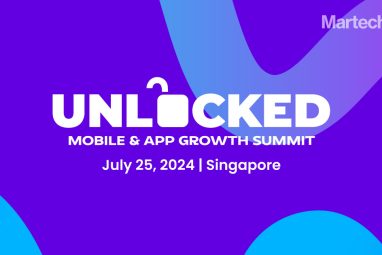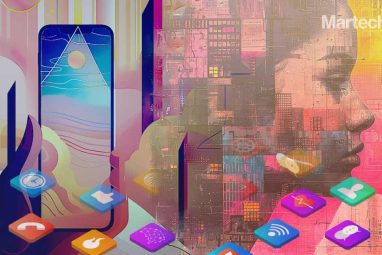How Can Marketers Combat Ad Fatigue?
Only one in 50 ads are successful, and ad fatigue inevitably sets in – it’s a vicious cycle. AppsFlyer unveils the specific elements of ads that resonate most with consumers across different categories and drive long-term user engagement and app downloads.
Topics
What to Read Next
- TripleLift Announces Partnership with Attain to Unify Context and Commerce
- Seedtag Partners with IRIS.TV to Expand Contextual Signals for CTV Targeting
- Magnite, Cognitiv Announce Deep Learning Integration for Real-Time Curation
- Dscout Announces Integration with HeyMarvin
- Comscore Launches Program-Level Capabilities within CCM

Setting realistic expectations based on a specific industry vertical and comparable engagement patterns still remain an ongoing struggle for marketers. In a complex world of digital advertising, interesting AI, user-generated content and a creative strategy for higher ROI is a battle to achieve.
Recently, AppsFlyer released its inaugural State of Ad Creatives in App Marketing report. It uncovers the elements of ads which resonate most among consumers across different categories, with a focus on campaign engagement, user acquisition and retention.
What paradox do marketers face in securing long-term user engagement?
No ‘one-scene’ type of advertisement will excel uniformly across all platforms, and this prompts the need for marketers to understand each channel’s unique audience and context before generating new content.
For instance, some marketers associate lengthier gaming ads, which exceed 15 seconds play on social media, with heightened long-term loyalty and retention. Conversely, on ad networks outside of social media, where users are often playing another game and watch rewarded video ads in return for digital currency or in-game extras, the trends differ. For gaming apps, animated ads that replicate gameplay show 26% higher ad engagement than ads using UGC or real-life footage.
For non-gaming apps, ads that incorporate real-life footage see a 15% higher rate of engagement than animated ads. Whereas, for some marketers, ads for hypercasual games (known for their simplicity and quick playthroughs) tend to be the strongest gaming genre for attracting new downloads, with about 48 app downloads for every thousand ad impressions or views.
What’s the biggest challenge that app marketers face?
The report’s key findings indicate that just 2% of ad variations command 68% of marketing spend, with 90% of advertising spending concentrated on just 10% of these ads. This happens when media sources automatically identify ads with the best engagement and direct the most spend to those few ads. To pinpoint the elusive ‘creative winner’ that captivates potential customers and drives action, marketers must typically test upwards of 50 variations.
Sharing his views on the challenges marketers face while incorporating an effective app marketing strategy, Shani Rosenfelder, Director of Market Insights at AppsFlyer, said, “With only one-in-fifty ads being a “winner”, and ad fatigue inevitably setting in when consumers see them over and over, it’s a never-ending cycle. That’s why it’s crucial that teams leverage AI and other technologies to ramp up their production, measurement, and optimisation to remain competitive.”
Which creative counterparts will help performance and growth marketers drive better ROIA?
Setting realistic expectations based on industry vertical and comparable engagement patterns can be a game-changer, maximising app downloads and user retention. For instance, UGC on social platforms, showcasing real people engaging with apps and describing the experience, emerges as a particularly influential ad format.
These content types offer consumers a thorough preview of the gaming experience, leaving less room for surprise and fostering a stronger bond between user and app, aligning with their preference for genuine, immersive, and relatable content that integrates seamlessly into their scrolling experience.
Commenting on the essence of incorporating an effective content creation strategy, Dana Shaviv, UA Technical Lead – Social at SciPlay, a Developer and Publisher of Digital and Mobile Games, said, “Strong creative assets are the foundation of successful campaigns. They grab attention and drive engagement. But great ideas need a plan. Integrating content creation with strategy, while considering trends and brand originality, is key. This approach will also foster a symbiotic relationship and more collaboration between marketing campaign managers and creative teams.”
Also Read: How Are Mobile App Trends Helping Indian Brands?
How is AI-fueled automation combating Ad Fatigue?
Highlighting the importance of implementing AI-powered automation in ad creation, Liraz Dvora Head of Creative, Global Gaming at TikTok, said, “Automation is revolutionising UGC by empowering everyday users with innovative storytelling tools. Creators are increasingly adopting automated voiceover tools, setting the stage for a new wave in pop culture.”
Expressing his views on AI-backed optimisation, Shani Rosenfelder, added, “It is no secret that this has been a year of change from previous standards and best practices for creative and marketing teams. As businesses drive increased collaboration across their organisations, they have turned to new technologies, strategies, and interconnected data-driven insights to fuel growth. The proliferation of AI has enabled teams not only to create more ad variations than ever, but also to measure them effectively and optimise accordingly.
Here are a few ways mobile marketers should consider to maximise app installs and user retention:
- Matching ad creatives with the appropriate platform, leveraging AI to optimise ad placement, and recognising that an ad’s performance can vary significantly across mediums.
- Incorporating AI in granular analysis to enable optimisation of thousands of variations for a competitive advantage.
- Balancing app install rates with user retention, optimising both low and high cost-per-install (CPI) and average revenue per user (ARPU) strategies for maximum return on ad spend (ROAS).









































































































